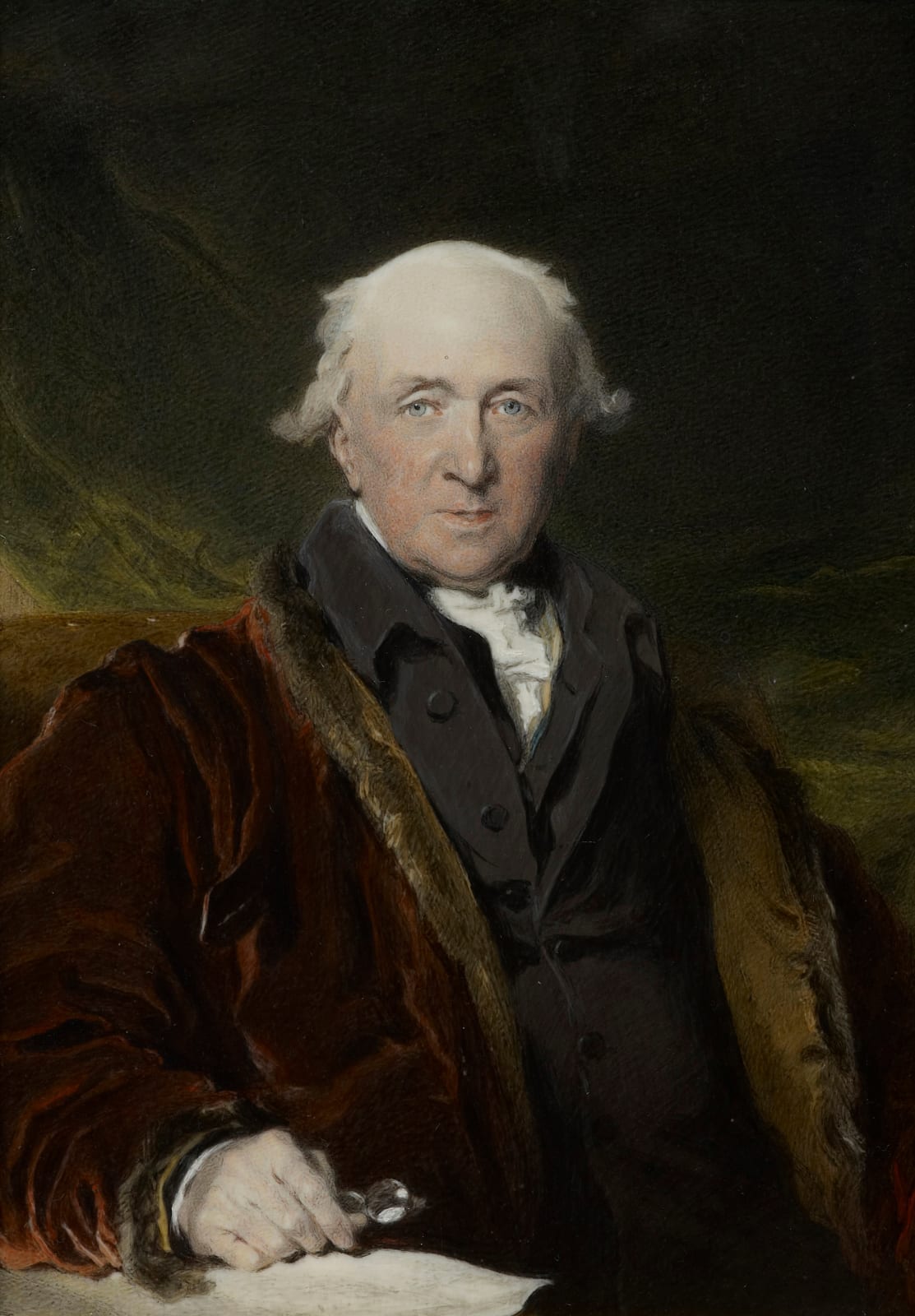
John Inigo Wright
To view all current artworks for sale visit philipmould.com
This striking portrait miniature by John Inigo Wright depicts the financier and art collector John Julius Angerstein, and derives from a portrait painted by Sir Thomas Lawrence in 1816.[1] Angerstein is best remembered for his sensational collection of old master paintings, which following his death formed the nucleus of what is now the National Gallery in London.
Angerstein was born in St Petersburg to a German family in 1735, although almost nothing is known about his early life. Family tradition stated that he had taken his surname from the German doctor who delivered him and his parents were Empress Anne of Russia and the merchant Andrew Poulett Thomson.[2] This is a fascinating but unfortunately fantastical account. Angerstein immigrated to England in 1749 and married twice. His first wife, Anne Muilman, was the widow of a Dutchman, Charles Crockett, and together the couple had two children John and Juliana Angerstein. After Anne’s death in 1783, Angerstein married Eliza Payne who also predeceased him.
Angerstein commenced his career as an apprentice in marine insurance and by 1770 had become a successful broker. By the time he retired in 1810, he was managing over 200 accounts. He subscribed in 1771 to a fund to find premises for New Lloyd’s Coffee House and was a leading voice in negotiating terms for rooms in the Royal Exchange. As part of Lloyd’s he helped establish the Lifeboat Fund and his private philanthropy supported the Veterinary College.
He owned two properties, 103 Pall Mall, just down the road from Philip Mould & Co., and Woodlands at Blackheath which was constructed for him in 1774. It was here that he housed his extensive private art collection including works by Titian, Rembrandt, Raphael, Rubens, Velasquez and Van Dyck. Several of these works were bought by the government on Angerstein’s death for £57,000 for the National Gallery.
Although he worked as an insurance broker, Angerstein mixed in artistic circles and was well-acquainted with Fanny Burney, Samuel Johnson, David Garrick, Joshua Reynolds and Thomas Lawrence. As can be seen by the present portrait, after Thomas Lawrence, Angerstein was an esteemed patron of the artist and took the responsibility of paying Lawrence’s debts on at least one occasion. Thomas Lawrence is said to have looked up to Angerstein as a father figure. Amongst Angerstein’s other power friends were George III, William Pitt and Horatio Nelson.
John Inigo Wright exhibited at the Royal Academy between 1795 and 1819 and is perhaps best remembered for his striking copies of works by the great painters of his day, including Sir Thomas Lawrence and John Hoppner. Wright’s close affiliation with these large oil portraits suggests that he enjoyed a close working relationship with society artists, offering their patrons a similarly lively depiction ‘in little’. Wright worked on both rectangular and oval-shaped ivory and was painter to Prince Edward, Duke of Kent and Strathearn (1767–1820); a portrait of whom is in the Royal Collection [RCIN 421041].
Much of Wright’s life remains a mystery, including his exact date of birth, but it is certain that he married twice. His first wife, Pricilla Guise, daughter of a musician who was master of the choristers at Westminster, died in childbirth in 1802. Wright committed suicide the same year as the death of the Duke of Kent in 1820, leaving a legacy of works portraying the leading figures of the day in his distinctive hand. Works by Wright are in the Victoria and Albert Museum, the British Museum and the National Portrait Gallery.[3]
[1] A version of this portrait is in the Metropolitan Museum of Art in New York [65.181.9].
[2] ODNB online.
[3] D. Foskett, Miniatures Dictionary and Guide (Woodbridge, 1987) p.680.
Be the first to hear about our available artworks
* denotes required fields
We will process the personal data you have supplied in accordance with our privacy policy (available on request). You can unsubscribe or change your preferences at any time by clicking the link in our emails.